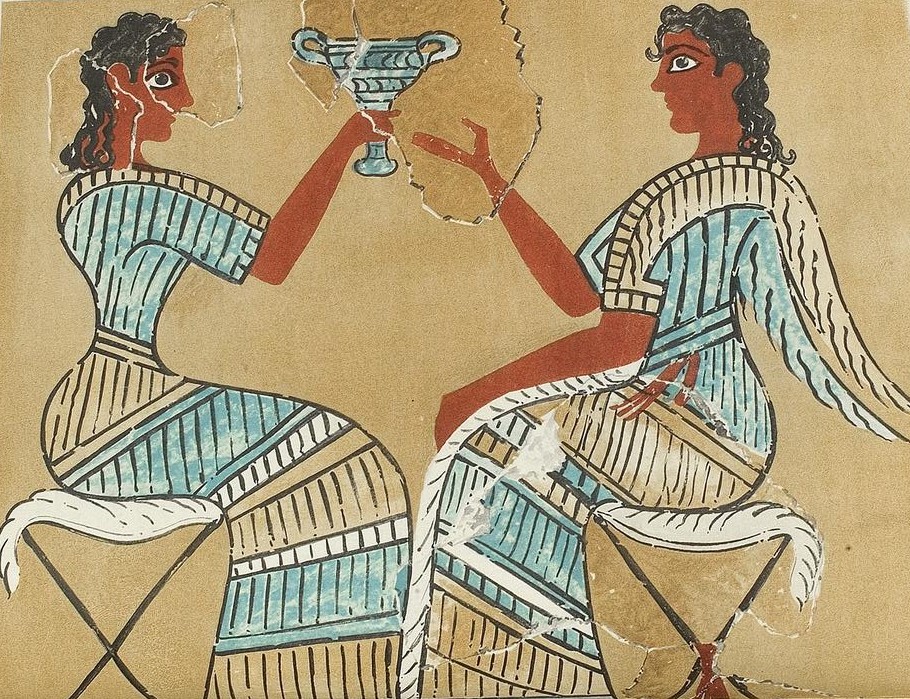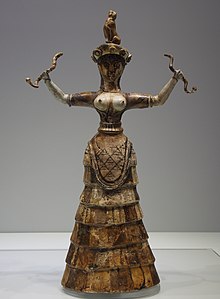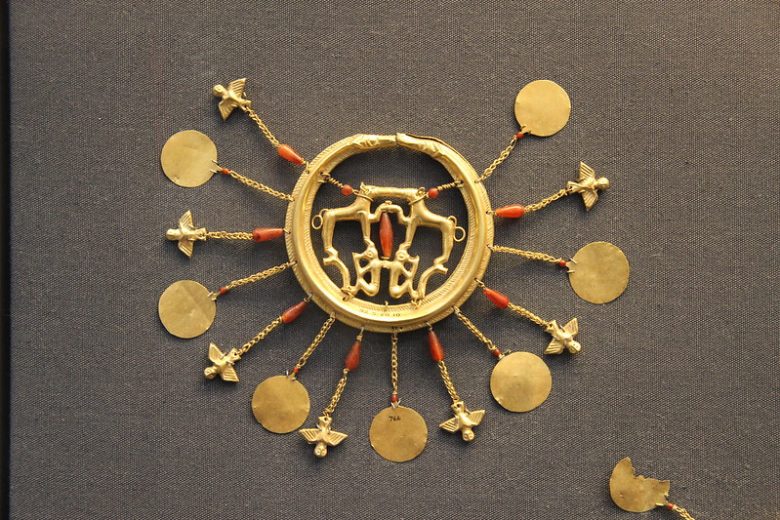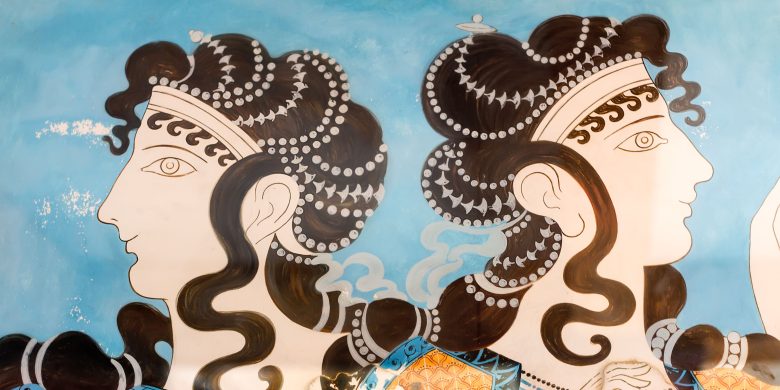Since March is Women’s History month, I thought I would discuss the women of Bronze Age Crete. In my series, I chose to write about this advanced society from about 2600 to approximately 1100 B.C.E. where women played pivotal roles in religion, culture and possibly even the governing of the cities. (In my previous series, I had a male protagonist, a traveling weaver, because women had a much inferior role in the United States of the late 1700s. They couldn’t own property or vote and if their husbands died, their sons took on the responsibility for their care. I wrote about the Shakers extensively, however, since in that society, women were equal and shared equal power in governance of the community.)
Frescoes and artifacts unearthed portray women in positions of reverence and power, suggesting a society where gender roles were viewed differently from contemporaneous civilizations.

Religion was female-centric, with goddess worship at its core. The male figures were always pictured as smaller than a central and large female figure. Women – or priestesses – were often depicted with open arms in a gesture of divine power. I imagined them as influential figures, managing religious ceremonies and advising on state affairs.

Although the myths about Minos and the Minotaur are what we know today, one has to remember they were told by the Classical Greeks, a very patriarchal society. On Crete, real women likely held sway in the Minoan court. Administrative records and luxurious goods designed for female use display their influence, hinting at the wealth and status women enjoyed. I previously blogged about textiles and the elaborate clothing women wore.
Archaeological findings suggest that queens may have ruled alongside kings or even independently. The opulent grave goods of priestess-queens, often buried with symbols of power, reveal the respect and reverence these women commanded. I imagined a male consort who managed administrative details, under the Queen who was also the High Priestess.

The archeology suggests women’s influence extended beyond the spiritual realm into economics and craftsmanship. The intricately designed pottery, seal stones, and frescoes feature women in prominent roles. We know the intricate textiles, woven by the women, were traded all over the Aegean.
Emerging evidence further suggests that women in Minoan society received an education. In my books, I talk about the agoge, an initiation into society. I based it on what we know of the ancient Spartans who also educated their women. They spent a year minimum in a dorm with other women before marriage and children. (Boys, we think, went into a dorm at the age of seven.)

These ancient Minoans were a progressive culture ahead of its time.
